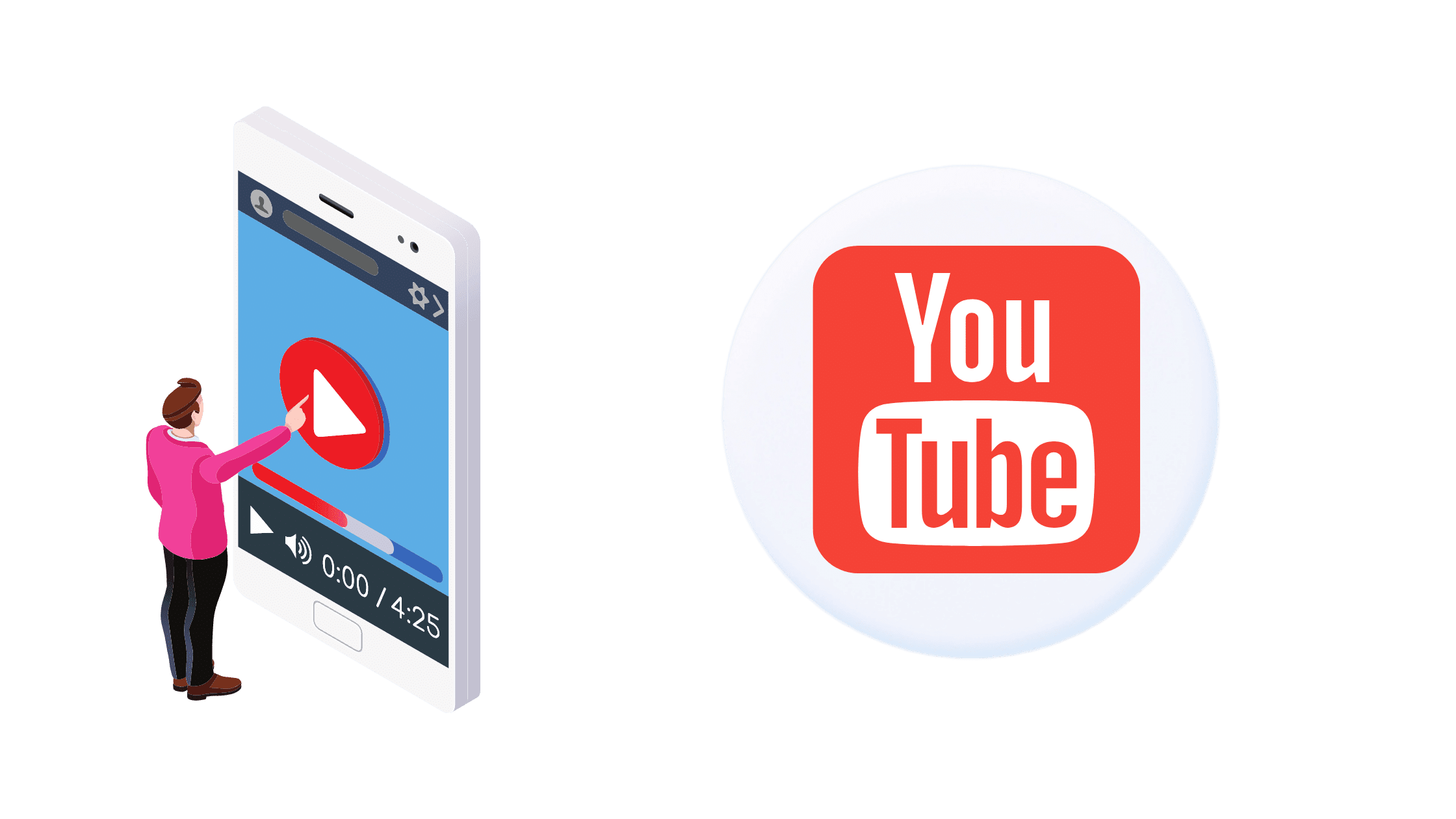Should You Create a YouTube Channel for Your Blog?

Written by Casey Botticello
Disclosure: Some of the links below are affiliate links, meaning that at no additional cost to you, I will receive a commission if you click through and make a purchase. Read our full affiliate disclosure here.
Thinking about expanding your blog into new territory? Incorporating a YouTube channel can be an exciting way to reach a broader audience and engage with your readers through a different medium. Many bloggers are discovering the benefits of a visual platform, providing a dynamic complement to their written content.
Connecting your blog with a YouTube channel can enhance your brand visibility and drive more traffic to your site. Video content often engages viewers in ways text alone cannot, fostering a more personal connection with your audience. It allows you to showcase your expertise and personality, making your content more memorable.
While creating video content requires planning and some production skills, the rewards can be significant. By offering varied content types, you cater to different preferences and increase your chances of gaining loyal followers. With determination and creativity, integrating a YouTube channel with your blog can be a rewarding step forward.
The Basics of YouTube for Bloggers

Creating a YouTube channel can enhance a blog by providing rich, visual content. It allows bloggers to engage with their audience in new ways, expanding their reach and diversifying their content.
Understanding YouTube as a Content Platform
YouTube is a powerful platform where bloggers can share videos to supplement their written content. It’s owned by Google, making it an excellent choice for driving traffic. Videos can rank well in search results, increasing visibility.
Creating a channel requires a Google account. Bloggers should consider content style, such as vlogs, tutorials, or product reviews, to match their blog’s theme. Consistency in posting helps build a loyal audience. Successful channels often have engaging thumbnails and titles to attract viewers.
Benefits of Integrating YouTube with Your Blog
Integrating YouTube with a blog can boost a blogger’s influence. Videos can attract subscribers, increasing audience engagement. Embedding videos in blog posts makes content more dynamic and interactive. It also provides an opportunity to showcase products or explain complex ideas.
A blog can benefit from SEO, as Google tends to favor video content in its search results. Bloggers can build authority and trust through well-crafted video content. Linking back to the blog from video descriptions drives traffic, combining the strengths of both platforms.
Potential Drawbacks to Consider
Despite its benefits, running a YouTube channel alongside a blog has challenges. Creating videos can be time-consuming, requiring planning, filming, and editing skills. Bloggers might find it demanding to maintain quality across both platforms.
Another issue is that YouTube content lives on a platform controlled by Google, which can change its policies or algorithms unexpectedly. This might impact the visibility and monetization of videos. Additionally, direct competition on YouTube is often intense, making it tough to stand out without a unique angle or niche.
Getting Started with Your YouTube Channel

Creating a YouTube channel can enhance your blog by engaging a broader audience. It’s essential to clearly identify the purpose of your channel, understand who your audience is, and develop a content strategy that aligns with your blog’s objectives.
Defining Your Channel’s Purpose
Before launching a YouTube channel, it’s crucial to define what you want to achieve. Think about how the channel can complement your blog. Some creators aim to provide tutorial videos, while others may focus on behind-the-scenes content.
Creating a mission statement helps guide future content. Consider what makes your blog unique and how that can translate into video. Doing so ensures your YouTube channel stays coherent and aligned with your goals.
Identifying Your Target Audience
Knowing your target audience is key to creating content that resonates with viewers. If your blog audience is mostly young adults interested in tech, your videos should cater to their interests and needs. Research is vital here.
Use analytics from your blog to gather insights about demographics and preferences. Look at comments on both your blog and social media to understand what topics generate the most interest. Tailoring your video content to this audience increases engagement and retention.
Planning Your Content Strategy
A content strategy serves as the blueprint for your channel’s development. Start by brainstorming ideas that align with your blog’s theme. Consider types of content like tutorials, interviews, or vlogs.
Create a schedule for posting videos that allows flexibility but remains consistent. Consistency helps build viewer trust and keeps the audience engaged. Also, tools such as a content calendar can help plan video releases, ensuring a steady flow of content relevant to your audience and blog.
Technical Setup and Equipment

When starting a YouTube channel for your blog, selecting the correct gear and setting up a recording space are key. Understand basic equipment needs and the software available for editing to create professional and engaging content.
Choosing the Right Equipment
Selecting the appropriate equipment can enhance video quality. A decent camera, such as a DSLR or mirrorless camera, provides clear images. Webcams can work for beginners too. A good microphone is crucial for clear audio. Options like lavalier or USB microphones are popular for their value and effectiveness.
Lighting equipment, like ring lights or softboxes, ensures well-lit videos. This equipment allows creators to maintain high-quality visuals in any environment. Tripods or gimbals stabilize the camera, ensuring smooth footage. Investing in these essentials helps create professional-looking content.
Creating a Recording Space
Designing a dedicated recording area can make filming more efficient. Choose a quiet, well-lit room to minimize distractions and enhance video quality. Use soundproofing materials or carpets to reduce background noise. A plain or branded backdrop can create a consistent and professional look that represents the blog’s theme.
Keep the filming area organized and clutter-free. It should reflect the channel’s niche and appeal to the target audience. Natural light is beneficial, but additional lighting may be needed on cloudy days. Customizing the space encourages creativity and boosts the overall production value.
Editing Software Options
Editing transforms raw footage into polished videos. There are numerous software choices available depending on skill level. Beginner-friendly options, like iMovie or Windows Movie Maker, offer basic editing tools for trimming and combining clips. More advanced software, such as Adobe Premiere Pro or Final Cut Pro, provides professional editing features.
These programs often include tools for color correction, audio enhancement, and adding text or effects. Many offer trial versions, allowing users to experiment before committing. Choosing user-friendly software that matches editing needs can streamline the production process and improve the final product’s quality.
Content Creation Tips
When creating content for YouTube, focusing on video quality, engaging with your audience, and adopting the right filming practices can make a big difference. These areas help in building a successful channel that attracts and retains viewers.
Producing High-Quality Videos
High-quality videos attract more viewers and keep them coming back. Using a good camera is important, but lighting matters just as much. Natural light works well for beginners, while ring lights can improve indoor setups.
Editing is a crucial step. Software like iMovie or Adobe Premiere makes it easy to cut out mistakes and add effects. Clear audio is vital too. Invest in a good microphone to avoid background noise and ensure viewers can hear you clearly.
Effective storytelling also sets your content apart. Plan out your video with a script or bullet points to stay on track. Use visuals like graphics or text overlays to explain complex points or keep interest alive. Consistency in style and quality builds a recognizable brand.
Enhancing Engagement with Viewers
Engagement keeps viewers interested and helps grow your channel. Start by asking questions in your videos to encourage comments. Respond to comments, as this shows viewers you value their input and helps build a community.
Interactive elements like polls can increase participation. Hosting live Q&A sessions is another way to connect directly with your audience.
Using calls to action (CTAs) effectively pushes engagement further. Remind viewers to like, subscribe, and share your content. Collaborations with other creators expose your channel to new audiences and can spark discussions among followers.
Best Practices for Filming
Filming properly can make your videos look professional. Always aim for a clutter-free background to keep the focus on your content. Avoid shaky footage by using a tripod or a stabilizer.
Choose a quiet environment to minimize background noise. Before filming, rehearse your script to ensure smooth delivery.
When shooting, frame your shots well. The rule of thirds is a simple guideline—place points of interest a third of the way into the frame to achieve balance. Regular practice and reviewing your footage helps in becoming more confident and competent over time.
Promotion and Marketing Strategies

Effective promotion and marketing are key to growing a YouTube channel for your blog. By leveraging social media, cross-promotion, and building an email list, you can boost your channel’s visibility and engage more viewers.
Leveraging Social Media
Social media platforms are powerful tools for promoting your YouTube channel. Sharing your videos on platforms like Facebook, Twitter, and Instagram helps in reaching a wider audience. Engaging with followers by responding to comments and participating in conversations increases visibility and builds a community.
Using platforms like TikTok is another strategy. Short, engaging clips from your YouTube videos can attract new viewers and direct them to your channel. Incorporating hashtags relevant to your content can also enhance discoverability.
Cross-Promotion between Blog and YouTube
Cross-promoting between your blog and YouTube channel can be very effective. Linking your videos in blog posts and embedding YouTube videos on your blog increases exposure. This provides readers with additional content and encourages them to visit your YouTube channel.
Additionally, you can create video content that complements your blog posts. This gives your audience a multi-format experience, catering to different preferences and enhancing engagement. Use calls-to-action in both formats to guide viewers and readers between platforms.
Building an Email Subscriber List
An email subscriber list is a direct way to reach your audience. Sending out newsletters with links to your latest YouTube videos keeps subscribers engaged and informed. Providing exclusive content or early access to videos in these emails can boost interest and viewership.
Focus on building your subscriber list by offering value through free resources or special insights related to your blog and YouTube content. Encourage sign-ups through both your blog and YouTube descriptions. Engaging subject lines and personalized messages further enhance the effectiveness of this strategy.
Analytics and Monitoring Progress

Utilizing analytics is crucial for growing a YouTube channel alongside a blog. By tracking video performance, understanding specific metrics, and adjusting strategies based on data, bloggers can effectively enhance their YouTube presence.
Tracking Video Performance
To assess the success of a video, it’s important to track metrics like views, watch time, and viewer retention. These metrics offer a snapshot of how audiences interact with content. Trends show which videos perform best, helping to shape future content strategies.
Engagement metrics, such as likes, comments, and shares, indicate the level of interaction. Videos with higher engagement tend to resonate more with viewers. Keeping an eye on these figures can guide creators in improving their video content and increasing audience interaction.
Additionally, monitoring where traffic originates is valuable. Understanding whether viewers are coming from search, suggested videos, or external websites helps refine marketing strategies, promoting the channel more effectively.
Understanding YouTube Analytics
YouTube Analytics provides numerous insights into a channel’s performance. Key metrics include reach, which shows how many people have seen the content, and impressions click-through rate (CTR), indicating how often viewers clicked on a video after seeing it.
Demographics are essential to know who is watching. Age, gender, location, and device type can help tailor content to audience preferences. Channels that cater their content to these demographic details often see better engagement.
Another helpful tool is audience retention data. It reveals how long viewers stay interested in videos. By analyzing this metric, creators can refine their video’s length and content to keep viewers engaged longer. This improves overall watch time, a crucial factor for channel growth.
Adjusting Strategy Based on Metrics
After gathering data, the next step is to adjust the content strategy. If certain topics perform better, creators might want to focus more on those areas. Doing so can boost their reach and viewer loyalty.
For videos that do not perform well, identifying the cause is key. Experimenting with different formats, styles, or lengths can make a difference. Monitoring the response to these changes helps fine-tune what works best.
Finally, testing new strategies by varying titles, thumbnails, or descriptions can provide fresh insights. Continual adaptation based on analytics helps a channel stay relevant and engaging for its audience.
Monetization Opportunities

Creating a YouTube channel offers bloggers several ways to earn money. From collecting ad revenue to engaging in sponsorships or selling merchandise, each method has unique advantages. These opportunities can help bloggers expand their income while reaching a wider audience.
YouTube Ad Revenue
When a blog becomes popular, it’s possible to generate income through YouTube ad revenue. By joining the YouTube Partner Program, creators can begin to earn through ads shown on their videos. To qualify, one’s channel must have 1,000 subscribers and 4,000 watch hours in the past year. Once these requirements are met, creators can start earning money each time someone views or clicks on an ad.
Different types of ads include skippable, non-skippable, and bumper ads. Each type offers varying payment rates, and revenue depends on the number of ad impressions. Creators should aim to make engaging content that encourages longer viewer retention to maximize potential earnings. This consistent participation can lead to meaningful income as video views grow over time.
Sponsorships and Partnerships
Another lucrative opportunity is through sponsorships and partnerships. Brands often seek creators whose audience aligns with their target market. By featuring products or services in their videos, creators receive payment from companies for promoting their offerings. This is often more profitable than ad revenue alone.
Partnership deals can involve creating sponsored content, product reviews, or explaining a service. These partnerships require creators to maintain transparency and add value for viewers by being genuine. Successful partnerships build trust with both the brand and the audience. This not only strengthens relationships but also potentially leads to more collaborations, increasing revenue streams.
Selling Products or Merchandise
Selling products or merchandise is an option that allows bloggers to connect directly with their audience. By creating branded items, like T-shirts or mugs, creators can share their unique identity and design with fans. This approach encourages followers to support the channel while receiving something tangible in return.
There is also the option to offer digital products such as e-books or exclusive content. Using platforms like YouTube’s merch shelf, creators can easily showcase their products directly under their videos. This makes purchasing seamless for viewers and helps bloggers generate a steady additional income stream.
